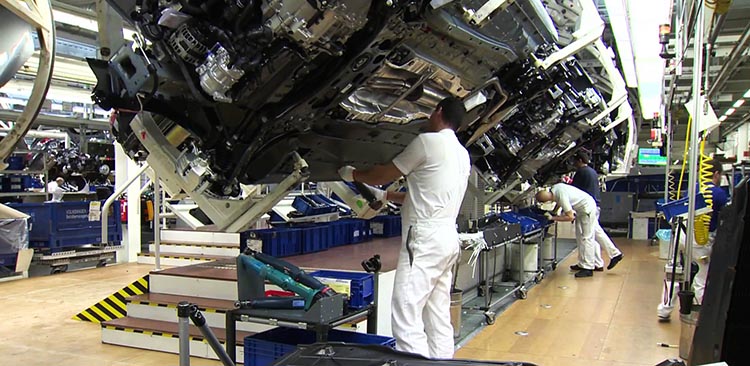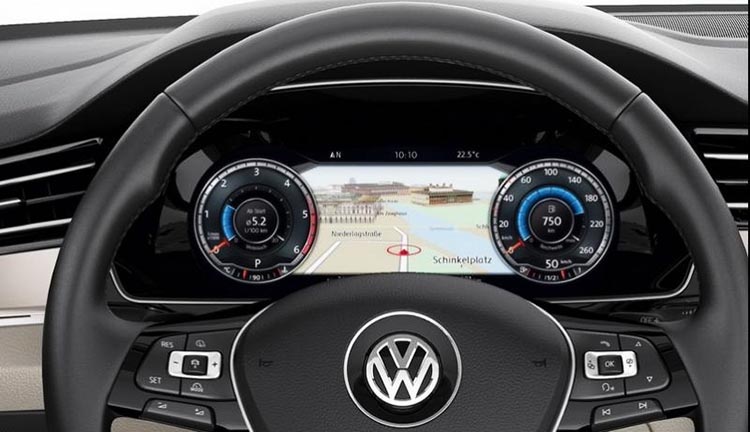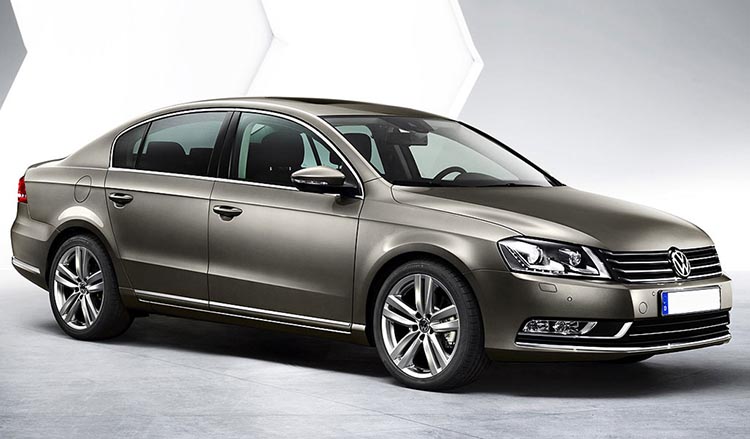Volkswagen Jetta. german car, Russian assembly
Volkswagen is German firm, which has been producing cars for many years, famous for its quality. But excellent reliability is known from cars assembled in their homeland, in Germany. But now the Germans are also being collected in Russia. This is how it started with Volkswagen Polo sedan- he showed himself very worthy, and now in Nizhny Novgorod they put on Volkswagen production Jetta. And this is a very good reason to check the Russian German.
So, this article is devoted to Volkswagen Jetta, let's try to understand its pros and cons, features, quality and much more.
Appearance. The body is both assembled and painted very high quality. We also thought over the adaptation for Russian roads, mainly the modernization touched on the ground clearance, it was increased to 16 centimeters, and this is quite enough for our roads. The Volkswagen Jetta itself is distinguished by its impressive length, it exceeds 4.6 meters. It is important to note that the car in its class is one of the largest and most massive. By the way, Russian buyers have no alternative in terms of the body, that is, it is only a sedan. The same Volkswagen Polo exists as a sedan, which is produced in Russia, in Kaluga, as well as in the form of a hatchback, which is produced in Germany.
A few words about competitors. And they are quite aggressive in the Volkswagen Jetta. These are already well-known in Russia Mazda 3, Honda Civic, as well as Opel Astra. Volkswagen Russian assembly
Interior. The salon, however, like any Volkswagen, is made according to a simple but successful formula. The forms are very concise, and, it is important to say, all this with a high degree of finish and assembly. In general, the design is quite ordinary, but everything is done so well that you immediately feel respect for the car, or rather, for the Volkswagen manufacturer. It would be necessary to say a little about visibility. Volkswagen Jetta has overly small side mirrors, so the situation behind the car is viewed a little incomplete. The rear row of seats is very spacious, even a tall person can easily accommodate here. The trunk is also top notch.
Power unit. But the engines, which cannot be said about the body, are offered quite a lot, the potential buyer has plenty to choose from. But of particular note is the so-called flagship Volkswagen unit Jetta. It is supercharged and thanks to it, even with a small volume of 1.4 liters, the Germans removed from it a power equal to 150 horsepower. That is, the weight distribution in terms of horsepower for the weight of the car turns out to be quite impressive, allowing the Volkswagen Jetta not only to simply move around, but also to give driving pleasure. But oh driving performance further in the article.
Driving performance. It should be noted right away that at first the car seems a little thoughtful, but this is not entirely true. Jetta accelerates without much excitement, but very smoothly and without jerks. All this happens due to the fact that the car has a 5-speed automatic transmission, which is in no hurry to shift gears. But one has only to translate the Volkswagen Jetta into sports mode work and the situation is radically changing. The car becomes noticeably faster, but the former comfort, to be honest, is coming to naught. This happens due to the fact that the automated gearbox starts shifting gears abruptly, with some jerks. The rather weak sound insulation also worsens the situation a little, although this is not typical for Volkswagen, well, perhaps these are assembly features not in the homeland of the Jetta. Tires are noisy, and the engine is also audible, but especially gambling drivers may even like it. But the car is controlled very well, which is typical of Volkswagen. The car clearly writes the trajectory and pleases the driver with its behavior even on a slippery road. Management is very informative. Smoothness is not very pleased, there is an opinion that adapting the Volkswagen Jetta to Russia could have been made softer.
But in general, the Volkswagen of the Russian assembly makes a pleasant impression. Although the cost is also not bad, but this is already the pedigree and prestige of the Volkswagen brand.
It is not at all surprising that auto fans are interested in where models from their favorite concerns are assembled. Many people believe that the quality and reliability of a vehicle depends on the country of origin of a particular vehicle. And we cannot disagree with this fact. Of course, it is important for our fans to know where Volkswagen is assembled in Russia, since German cars are very popular in our market.
But first, a little history. In the early fifties, this brand assembled about 65% of all models of its cars in Germany. Thanks to this, the company had a turnover of 1.4 billion dollars. The most "golden" years for the German company were the 70s. It was during this period that the brand released two of its most legendary models Passat and Golf. Today, this automaker includes many well-known brands:
- Volkswagen;
- Bugatti;
- Skoda;
- Audi;
- seat;
- Bentley;
- Lamborghini.
In our country, the brand produces several models. All modifications are produced at the GAZ plant in Nizhny Novgorod Jetta models. And at the Kaluga enterprise, the Tuareg, Tiguan and Polo sedan models roll off the assembly line. In the Russian Federation, the concern produces only four of its models. The rest of the Volkswagen cars are supplied from Germany and other countries.
It is known that cars from this concern are known in every corner of our planet. Initially, the brand launched production Vehicle at home in Germany. But, as the brand began to develop, factories for the production of German cars began to open on various continents. Where Volkswagen is produced in Russia, we have already told, now about which countries are still assembling famous German cars.
![]()
In addition to the RF Volkswagen cars collected in the following countries:
- Brazil;
- Argentina;
- Germany;
- Mexico;
- South Africa;
- Poland;
- Belgium;
- Czech Republic;
- Spain.
Also, cars are produced in North and South America. We remind you that for fifteen years it was in Brazil in the city of San Bernard that the legendary Beetle was produced. The concern is one of the largest in the world, since its revenue is more than sixty billion Euros. AT the lineup The brands include the following well-known machines:
- Volkswagen Golf;
- Volkswagen Passat;
- Volkswagen Beetle;
- Volkswagen Polo;
- Volkswagen Touareg;
- Volkswagen Transporter;
- Volkswagen Amarok;
- Volkswagen Jetta;
- Volkswagen Caddy.
Let's start with the fact that this sedan is assembled in several countries. The assembly has been established in Germany (Emden and Mosel), Russia (Kaluga), Luanda (Angola), Ukraine (Solomonovo) and China (Changchun).
Each enterprise is equipped with special modern equipment and mechanisms. Allowing you to create high-quality and reliable cars. Where Volkswagen is produced in Russia, modern assembly technology is used. Thanks to this, Passat sedans are maximally adapted to Russian roads. For example, in Germany, one car is assembled at a factory in 48 hours. Here everything is divided into workshops.

In the first workshop, all parts are welded and the entire structure is assembled. Then it is sent for control, where specialists check the quality of the seams and straighten them. Then, the car is sent for painting and drying, and only after all this, the car gets to the full assembly. Here everything is controlled very carefully, therefore, reliable Volkswagen Passat cars are supplied to the market.
When choosing a car, any person pays attention to its comfort and reliability. And, if we judge the models from this point of view, then it is also necessary to pay attention to the time spent in our market. Thus, it is impossible not to mention the Volkswagen Passat. This machine meets all possible consumer requirements.
So we decided to figure out where the Volkswagen Passat is assembled for our market. And also, consider why the model has become so popular. Well, and finally, let's think about the advantages and disadvantages of a German car.
Where is the Volkswagen Passat assembled for our market
According to the generally accepted framework, it is believed that the country where the car is assembled directly affects its quality. Volkswagen Passat for Russian consumers do:
- in Germany in the city of Wolfsburg and the city of Emden;
- in China;
- in Malaysia;
- until 2010 in Russia in the city of Kaluga.
By the way, people who think that German cars are assembled well only in Germany are mistaken. But, for Russia, trade winds are supplied only by German production. Therefore, this consideration fades into the background.
How Volkswagen Passat is assembled in Wolfsburg
In the city of Wolfsburg, which is located in Germany, a special conveyor line for the Volkswagen Passat has been established. This machine is assembled completely in 48 hours, and the process is so well-established that everything is done with German precision and the highest quality.
In the first workshop of the plant, parts are welded and the outlines of the body are created. Next, the design passes quality control using electronic systems. Here the line of seams is measured and their straightening is done. If a marriage is found here, then the body is sent for revision or goes straight to the scrap.

Then future model dyed and dried. The interior, electronics and control panel are already mounted here. Next, the car acquires a transmission and power plant. Then they put optics and decals of the company on the car.
Well, at the final stage, the finished car is tested on the track and sent to the future buyer. If any faults are found here, then it is sent for revision. That is, you will never buy a Volkswagen Passat with a marriage.
How Volkswagen Passat was assembled in Russia
As already mentioned, until 2010 volkswagen Passat was assembled in the Russian city of Kaluga. If you are going to buy a model for secondary market, then you can get to our production.
Russian engineers built the model on a generally accepted platform and installed a wide range of engines in 1.8, 3 and 3.6 liters. They issue 152, 200 and 300 Horse power, respectively. Russian masters slightly overestimated oil consumption. After 80 thousand kilometers, the model begins to require a liter per 3 thousand kilometers.
Another nuisance is the drive chain jump. This problem begins to manifest itself after 70 thousand kilometers.

Some owners note the rather loud operation of the gasoline pump. But, after replacing it, everything disappears. Also, you can note the lack of clarity of gear shifting. This is due to the long travel of the clutch pedal.
By the way, if you buy a Volkswagen Passat of our assembly, do not take automatic box gears. Claims appear starting from 40 thousand kilometers. In order to avoid them, you will have to replace the clutch. But, not the fact that all signs will disappear. It's all expensive. Thus, be careful.
Sometimes the upholstery of the seats rubs, and in winter the gas tank hatch freezes. In winter, the mirrors fold and unfold with a delay of 20 seconds.
Basically, there are no more complaints. Paintwork lasts long and secure. Wherein driving performance do not suffer over time.
Specifications Volkswagen Passat German Assembly
Last thing Volkswagen generation Passat appeared on our market in 2011. The seventh series is essentially a facelift of the sixth model rather than an innovative version. But, here the design of the front bumper, optics and radiator grill have changed. Almost nothing has changed in the cabin. Only rear passengers added 10 centimeters for more comfort.
From technical features It is worth noting the emergency braking system in urban mode. This program causes the model to pause if it is close to another model. But, it works at a speed of 30 kilometers per hour or less.
Also, the car itself controls the driver's condition. If he shows signs of fatigue. If they are present, the car starts beeping. When traveling long distances, the Volkswagen Passat will prompt you to stop and rest every 4 hours.

Twelve sensors automatically perform parallel parking. All you have to do is press the brake and pedal. As for security systems, the seventh generation received five points out of five possible in world tests.
Compared to the regular version of the Volkswagen Passat, the novelty presented in Tokyo has an increased ground clearance. Previously, it was 135 millimeters, and now it has received 165 millimeters. This is the first sedan to receive all-wheel drive.
Diesel Volkswagen Passat has become the most economical car in the world. He was awarded this title in 2012 thanks to a married couple who went on a trip. Under the hood, the model has a 140 horsepower engine. He drove 2601 kilometers on 73 liters of fuel. At the same time, 55 kilograms of luggage lay in the trunk. The car was on the road no more than 14 hours a day. This result is recorded in the Guinness Book of Records.

It is also worth mentioning the new innovative trunk opening system. She got the name "kick in the ass." The fact is that the opening sensor is located under the bumper. For it to work, the driver must swing his foot at the car.
Although the seventh Passat is a young car, it has already become as popular as its predecessor. Only according to the results of sales in 2012, almost 70 thousand models were sold.
Therefore, if you are looking for an excellent German-assembled sedan at an affordable cost and with powerful technical specifications, choose only Volkswagen Passat.
Many potential buyers are interested in the question of where they assemble a car, which, in principle, is not even surprising. It is believed that build quality is directly related to the birthplace of a car, and only a car created in the country of the manufacturer can be truly reliable, but in fact this kind of opinion is not entirely true, at least in the case of cars. Stereotypical thinking is characteristic of everyone and everyone, but the stereotype that cars of poor quality are assembled in Russia is nothing more than a delusion. However, the topic of our article today is not general position about assembling cars, but the question of where the Volkswagen Passat is assembled, supplied to our car market, and it is with this question that we will deal with in our today's article.
Where is the Volkswagen Passat made?
Answering the question of where the Volkswagen Passat is produced, it is probably worth noting right away that this model collected abroad. In Germany, in the city-factory Wolfsburg, there is a special conveyor line on which this car is born. Creating a car is a laborious process, but the workshops of the German concern work well, so one car can be assembled in 48 hours, and this speed is achieved far from degrading quality and reliability.In the first workshop, where the Volkswagen Passat is assembled in its initial form, the parts and the entire structure are welded. After that, the skeleton passes electronic quality control: specialists measure the welds and straighten them. In the presence of marriage or distortion, the structure is sent either for revision or for scrap. Then the base of the machine goes through the stage of painting and drying, and only after that it is sent for assembly. Thus, the company assembles cars of an undeniably high level of quality and reliability.
Considering the fact that the Volkswagen Passat car is made in Germany, it can be said with confidence that you will not find a single marriage in the line of this model, as is the case with other cars.
After the entire body is assembled, the car is sent to a new workshop, where the car is already going through one of the final stages of assembly. First, interior parts are mounted on the produced car: the front panel, seats, ceiling and floors, then the transmission parts and the power unit are installed. At each stage, an assembler with special qualifications works, that is, in the assembly shop power unit the person who is responsible for the line where the interior or body is assembled will never work. Even when the engine is installed, the design is sent to the electronic equipment shop.
At the very last turn, the car receives all the optics, decals and nameplates of the concern, while reaching last frontier Volkswagen Passat lines where the car is already assembled in accordance with all the declared characteristics. After assembly, the machine will be in the sump for a short time. Here she must be tested. After testing, a specialized department for technical quality control of finished products will check the car for various kinds of damage and defects. If a defect is found at this stage of production, the machine will go for revision and removal of faults.
